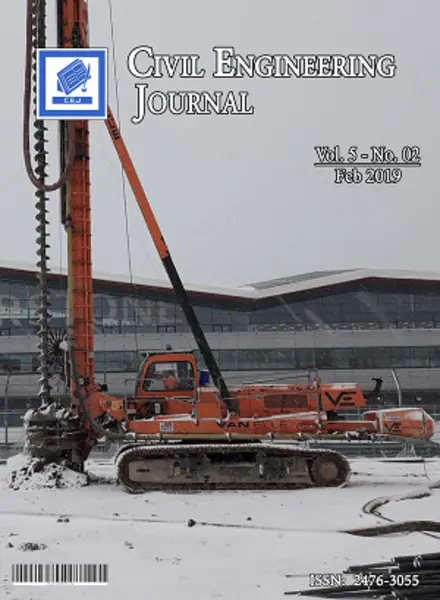-
risk-reduction credit for very early warning fire detection at nuclear power plants: from faq to fiction
جزئیات بیشتر مقاله- تاریخ ارائه: 1400/08/01
- تاریخ انتشار در تی پی بین: 1400/08/01
- تعداد بازدید: 472
- تعداد پرسش و پاسخ ها: 0
- شماره تماس ژورنال: 982188779475ext.258
in 2004, the u.s. nuclear regulatory commission (nrc), with support from the commercial nuclear power industry, adopted the 2001 edition of national fire protection association (nfpa) standard 805, “performance-based standard for fire protection for light water reactor electric generating plants,” as the means by which commercial nuclear power licensees could comply with title 10 of the code of federal regulations, part 50.48(c), to replace deterministic fire protection licensing bases with ones that are risk-informed and performance-based. to facilitate licensee “transitions” to the new licensing bases via nfpa 805, a “frequently asked questions” (faqs) program, established early during the pilot-plant phase, was expanded to enable use of consensus technical “short-cuts” for fire probabilistic risk assessment (pra) methods. these “fire pra faqs” enabled licensees, with nrc approval, to bypass more traditional means of establishing acceptable pra method enhancements on an interim basis, pending eventual confirmation by test programs and/or more detailed analyses. the nrc approved several, of which perhaps the most substantial in providing risk reduction benefits was faq 08-0046 on “incipient fire detection systems,” more accurately characterized as “very early warning fire detection systems” (vewfdss). controversial from the start, the hidden story behind this faq’s initial adoption is relevant to examination of the nrc nureg report that later replaced it and remains in effect today. this article examines this backstory, tracing recommendations that were proposed and bypassed, then examines alternatives to the current guidance. these alternatives, which maximize possible risk reduction credit for vewfdss at nuclear power plants, remain at least a factor of two less than the current peak nureg-2180 risk-reduction factor even before the latter accounts for the possibility of fire pre-emption altogether.
حوزه های تحت پوشش ژورنال
مقالات جدیدترین رویدادها
-
استفاده از تحلیل اهمیت-عملکرد در ارائه الگوی مدیریت خلاقیت سازمانی و ارائه راهکار جهت بهبود
-
بررسی تاثیر ارزش وجوه نقد مازاد بر ساختار سرمایه شرکت های پذیرفته شده در بورس اوراق بهادار تهران
-
بررسی تأثیر سطح افشای ریسک بر قرارداد بدهی شرکت های پذیرفته شده در بورس اوراق بهادار تهران
-
بررسی تأثیر رتبه بندی اعتباری مبتنی بر مدل امتیاز بازار نوظهور بر نقد شوندگی سهام با تأکید بر خصوصی سازی شرکت ها
-
تأثیر آمیخته بازاریابی پوشاک ایرانی بر تصویر ذهنی مشتری پوشاک ایرانی (هاکوپیان)
-
مشخصات جریان ترافیک و ماهیت شناخت آن
-
بررسی پراکندگی و تراکم و قدمت اشکفت ها و معدن ها و مقبره های دستکند به ثبت رسیده در سازمان میراث فرهنگی ایران با استفاده از سامانه اطلاعات جغرافیایی
-
ارائه ی راهکارهای لازم برای مدیریت استراتژیک جوامع چند قومیتی بر اساس سیستم های چندمتغیره و دکوپله سازی آن ها
-
تاثیر بتن خود متراکم حاوی نانو سیلیس و متاکائولن در مقاومت فشاری محیط معمولی
-
کاربرد خوشه بندی فازی در تحلیل پروتئین های مرتبط با سرطان های مری، معده و کلون بر اساس تشابهات تفسیر هستی شناسی ژنی
مقالات جدیدترین ژورنال ها
-
مدیریت و بررسی افسردگی دانش آموزان دختر مقطع متوسطه دوم در دروان کرونا در شهرستان دزفول
-
مدیریت و بررسی خرد سیاسی در اندیشه ی فردوسی در ادب ایران
-
واکاوی و مدیریت توصیفی قلمدان(جاکلیدی)ضریح در موزه آستان قدس رضوی
-
بررسی تاثیر خلاقیت، دانش و انگیزه کارکنان بر پیشنهادات نوآورانه کارکنان ( مورد مطالعه: هتل های 3 و 4 ستاره استان کرمان)
-
بررسی تاثیر کیفیت سیستم های اطلاعاتی بر تصمیم گیری موفق در شرکتهای تولیدی استان اصفهان (مورد مطالعه: مدیران شرکتهای تولیدی استان اصفهان)
-
بررسی تاثیر آمیخته های بازاریابی سبز بر وفاداری مشتری در شرکتهای کوچک و متوسط محصولات غذایی سبز
-
امکان مطالبه و جبران غرامت و آسیب های جانی مالی نفتکش سانچی بر مبنای حقوق بین الملل
-
بررسی نقش فاکتورهای انگیزشی بر توانمندی کارکنان
-
معیارهای دموکراتیک در دنیای مدرن و اسلام در انتخابات منصفانه
-
comprehensive review on gas migration and preventative strategies through well cementing


سوال خود را در مورد این مقاله مطرح نمایید :